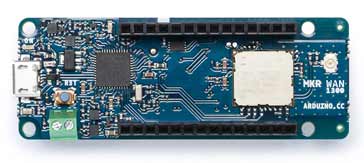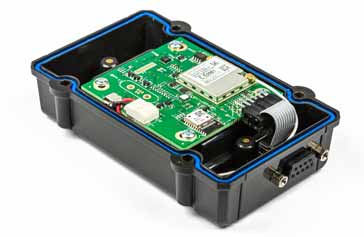LoRa Physical Layer & RF Interface
The physical interface or radio / RF interface for LoRa wireless modules and devices is key to their operation providing robust low power communications over long distances.
LoRa Long Range Includes:
LoRa basics
Physical layer
LoRaWAN network
The LoRa RF / radio interface or physical layer defines the signal that is transmitted by a LoRa modules and devices.
The LoRa radio interface defines the properties including the modulation waveform, power levels allowable, bands that can be used (and in which continents) along with RF protocols and all the other details about the RF signal and interface.

LoRa frequency bands
The LoRa wireless system makes use of the unlicensed frequencies that are available worldwide. The most widely used frequencies / bands are:
- Europe: 868 MHz
- North America: 915 MHz
- Asia: 433 MHz
Using lower frequencies than those of the 2.4 or 5.8 GHz ISM bands enables much better coverage to be achieved by the LoRa wireless modules and devices, especially when the nodes are within buildings.
Although the sub-1GHz ISM bands are normally used, the technology is essentially frequency agnostic and can be used on most frequencies without fundamental adjustment.
LoRa modulation
LoRa RF physical layer uses a form of spread spectrum modulation. The LoRa modulation scheme uses wide-band linear frequency modulated pulses. The level of frequency increase or decrease over time is used to encode the data to be transmitted, i.e. a form of chirp modulation.
This form of modulation enables LoRa wireless systems to demodulate signals that are 20dB below the noise floor when the demodulation is combined with forward error correction, FEC. This means that the link budget for a LoRa system can provide an improvement of more than 25dB when compared to a traditional FSK system.
As a result of the fact that the transmission is spread in a pseudo-random fashion, it appears like noise and may be difficult for non-Lora users to detect. This can assist in the security of the system.
A further advantage of the system is that the chirp modulation, and the system in general is tolerant to frequency offsets and as a result it is possible to use a basic crystal oscillator with a 20 - 30 ppm tolerance rather than a temperature compensated oscillator, TCXO. This can provide some good coast savings within the node electronic circuitry.

LoRa data communications
The communication between different end-devices and gateways utilises several different frequency channels and it uses different data rates.
The choice of the data rate is a balance between communication range and message duration, i.e. the rate at which the required data can be sent. Longer range signals may have lower levels at the receiver and this means that data rates may reduce to accommodate the lower received levels.
The use of the chirp spread spectrum technology enables communications with different data rates not interfere with each other. In this way a set of "virtual" channels is created which increases the capacity of the gateway.
LoRa adaptive link
The fact that only low data rates are used, and low levels of overall data transfer means that low bandwidths are required. A variety of bandwidths are available. The main ones are: 7.8 kHz; 10.4 kHz; 15.6 kHz; 20.8 kHz; 31.2 kHz; 41.7 kHz; 62.5 kHz; 125 kHz; 250 kHz; 500 kHz, although the top three tend to be the most commonly used.
In addition to the variety of bandwidths available, LoRa uses six spreading factors, designated SF7 through to SF12 to adapt the data rate and range trade-off. Higher spreading factor allows longer range at the expense of lower data rate, and vice versa.The combination of bandwidth and spreading factor can be chosen according to the link conditions and the level of data to be transmitted. A higher spreading factor improves transmission performance for a given bandwidth, but it also increases transmission time. Longer spreading factors provide higher sensitivity but longer transmission times and therefore lower data rates. These can vary from as few as 18bps up to 40Kbps.
It is also possible to improve the noise immunity by using forward error correction. However, this reduces the actual data throughput because the error correction itself adds additional correction data to allow the receiver to recover the actual message in the presence of errors.
The power level used within LoRa wireless RF physical layer is adaptive. The power level used is dependent upon the data rate needed, link conditions etc. An algorithm is used to determine the required power level - the transmitted power is normally backed off a little from the maximum needed to support fast communications and in this way the battery life is maximised and network capacity maintained.
The physical layer / radio interface for the LoRa wireless system provides an excellent format for low power low signal communications. This makes it ideal for low data rate, low power and long distance communications. The RF interface enables the LoRa nodes to be located in many poor locations and still maintain connectivity
Wireless & Wired Connectivity Topics:
Mobile Communications basics
2G GSM
3G UMTS
4G LTE
5G
Wi-Fi
Bluetooth
IEEE 802.15.4
DECT cordless phones
Networking fundamentals
What is the Cloud
Ethernet
Serial data
USB
LoRa
VoIP
SDN
NFV
SD-WAN
Return to Wireless & Wired Connectivity



